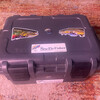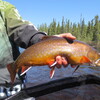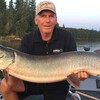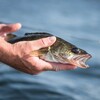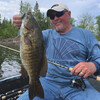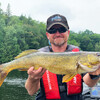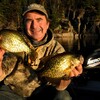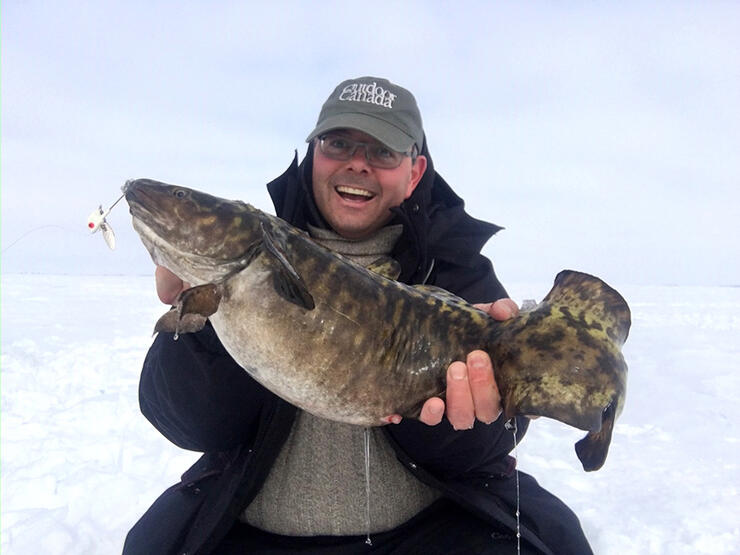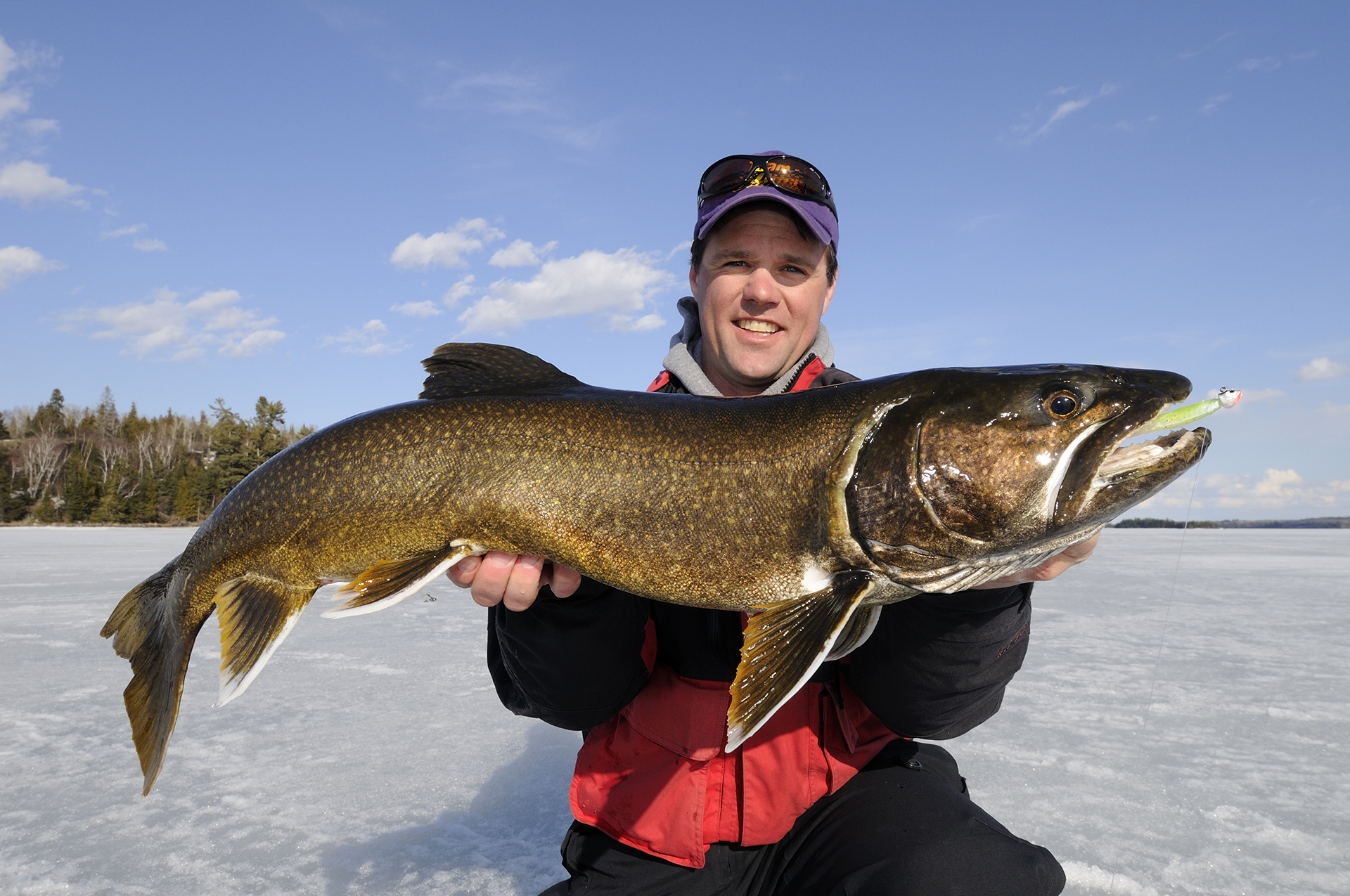
A Whole Lota Lovin'
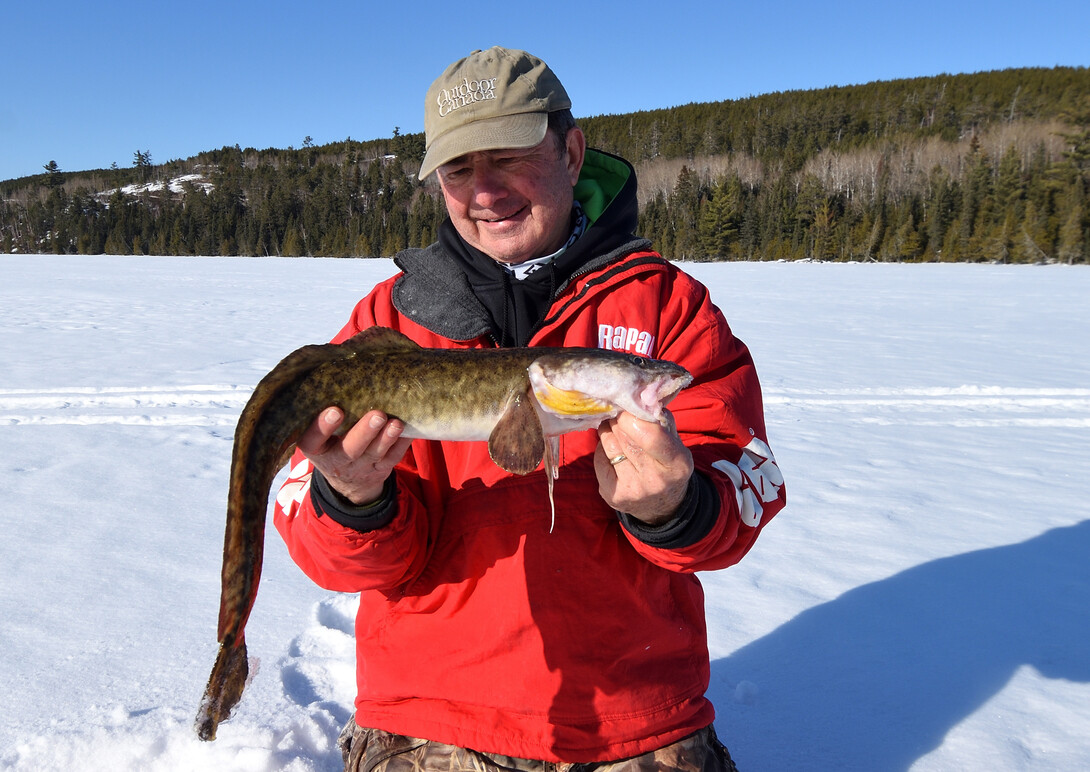
Burbot, or as they are known by their scientific name lota lota, are the most fascinating fish swimming in Northern Ontario waters. They are strangely beautiful, with wide, flared-out dorsal and pectoral fins that wrap around, serpent-like, to form their tails. And their big heads, beady eyes, and mottled green, yellow, and brown leather-like skin resemble nothing else that swims in our northern lakes and rivers.
If all that wasn't outlandish enough, burbot are the only fish in Ontario waters that grunt, groan, and make loud drumming sounds by expanding and contracting their swim bladders. They perform this cacophony to attract other burbot so that they can gather in large groups and then roll and weave in squirming balls along the bottom, as they spawn in the most frigid, barely above freezing (1.5° C) water they can find.
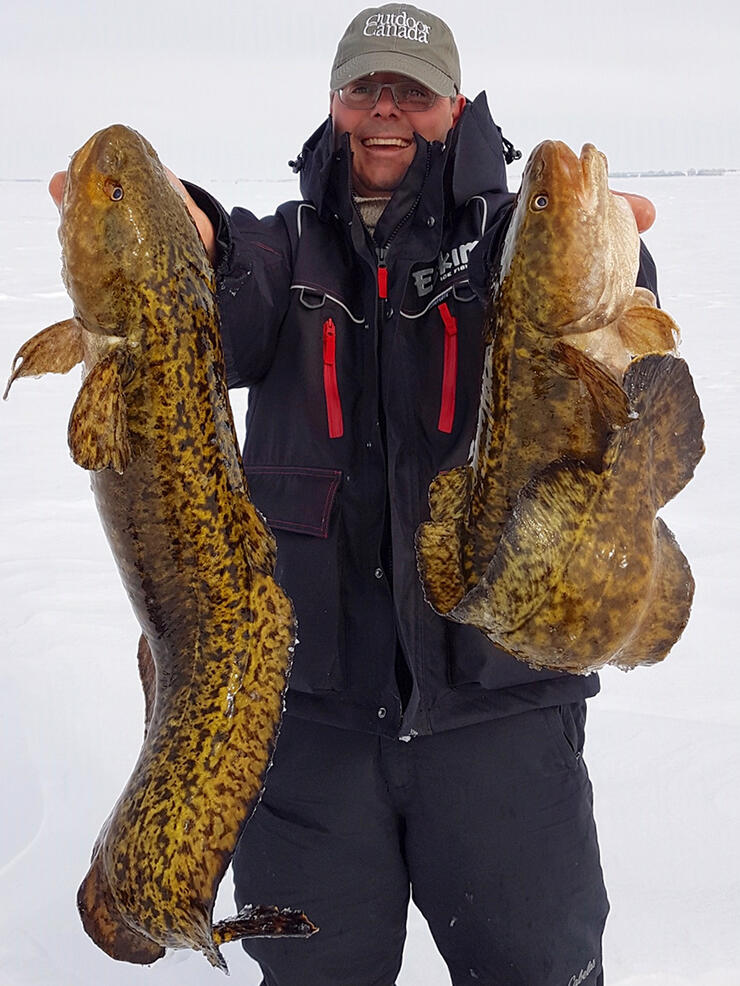
Burbot are also fierce predators and, surprisingly to many, delicious table fare. But it shouldn't be unforeseen when you think about it, given that burbot is freshwater's first cousin of cod, the saltwater species that made Canada famous on the Grand Banks of Newfoundland and that headline the classic "fish and chips" served around the world.
In light of all this, it is surprising that most ice anglers have never caught a burbot—at least not on purpose—landing perhaps one or two a season by pure happenstance.
Not so for good friends Jeff and Jason Matity, however, who visit Northwestern Ontario's Sunset Country at every opportunity and are burbot hunters extraordinaire.
When I asked older brother Jeff what he looks for on a contour map to signal a likely hotspot for burbot (some anglers also call them ling, eelpout, or lawyers), he named shallow rock, sand, and gravel flats, close to deep-water foraging areas.
"I look for the biggest main-lake feeding flats that jut out into the deepest part of the lake," said Matity. "Once you locate a spawning flat, you need to make an extra effort to find the edges where the shallows give way to a steep drop-off. That’s the area to camp on. Individual fish make several spawning forays before they’re spent, and they feed heavily between these runs. So they need shallow spawning grounds close to deep water. These areas are also where groups of fish concentrate, and where you can intercept the biggest ones.
"They go on a rampage and eat the cupboards bare. If you fish in a shelter on one of these shoals, you can watch the fish coming in and mauling your baits. The daytime bite lasts throughout the rest of the ice-fishing season, as separate groups of individuals perform sentry duty against marauding ciscoes, perch and shiners."
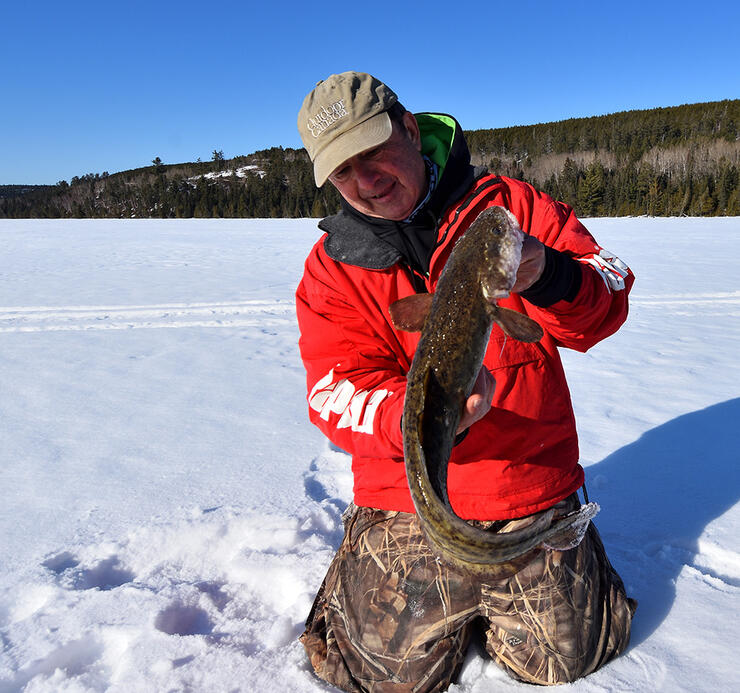
One of the nice things about the way the Matity boys target burbot is that you don't require any special tackle. If you ice fish for walleye, sauger, northern pike, or lake trout, you already have the necessary gear.
"Jeff and I jig the same lures we use when we're ice fishing for walleye," says Jason, "but we double or triple the size. When we're walleye fishing, for example, we like to use 1/4- to 1/2-ounce ReelBait Flasher Jigs and Fergie Spoons. But for burbot, we'll use 3/4-ounce to 1½-ounce models. Burbot aren’t picky eaters, and by using bigger baits you can help them find your lure. Big baits make a lot of noise when you bang them into the bottom."
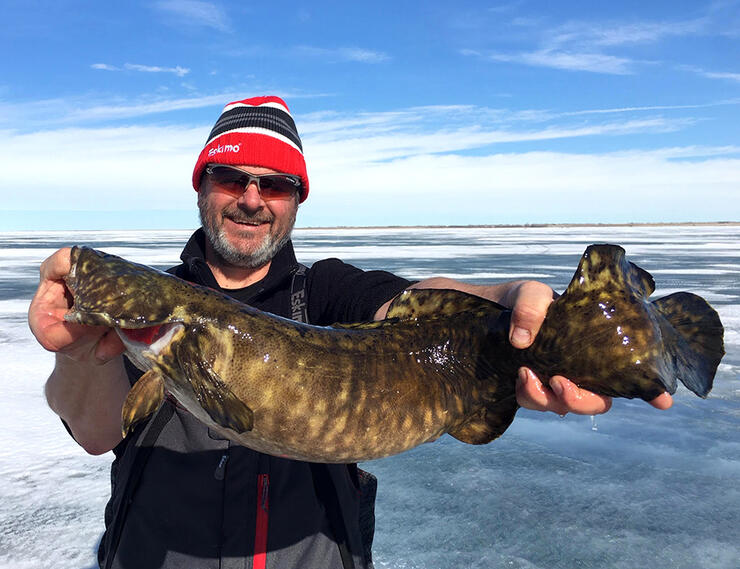
The Matity brothers have also made an art of trimming large ciscoes (aka herring) to produce the butterfly filets they use to dress and scent their lures. They place a baitfish on its side, slice off the head, and then cut all the way through the body following the lateral line. This leaves them with three pieces: the head, the majority of the body including the tail and back, and the U-shaped belly portion that they cut into quarter-inch-wide pieces.
"At the bottom of the U in each butterfly piece, you’ll find the ventral midline tendon," Jeff explains. "This is where you want to hook it onto your jig or spoon. In the water, the bait flaps enticingly, flashing and giving off a scent. It’s burbot candy. As for the best lure colours, glow in any shade is king. Second is hot fluorescent pink, orange, and chartreuse. Burbot can see quite well, and a little taunting goes a long way."
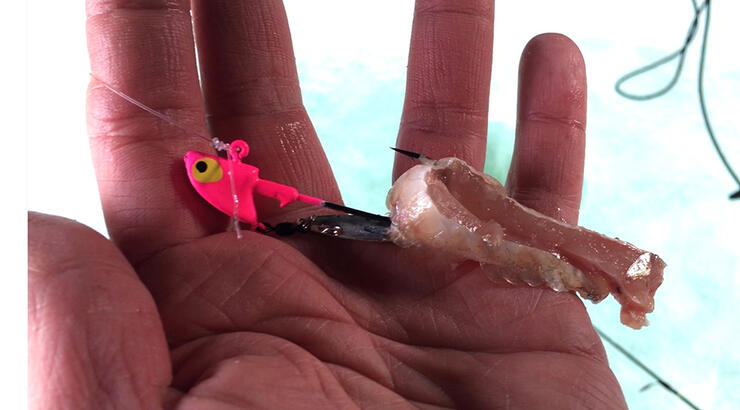
Watching the Matity's rip the lures as high above their heads as they can reach and then drop them into the bottom so they crash with a resounding thud, sending mud flying is a sight to behold, but the process attracts the beautiful big-headed beady-eyed monsters. Then they seal the deal by dancing their lures on the bottom before lifting them up slowly a foot and holding them as still as possible until they see signs of life on their sonar screens. A little bit of subtle finessing seals the deal.
"When we're on an aggressive group of burbot," says Jeff, "it's like catching perch, although perch don't fight for several minutes! Fifty fish is a reasonable expectation when you've patterned the bite, and we always release the big fish so they can spawn. My personal best burbot was 40 inches long and weighed in the mid-teens."
If you've never ice-fished for them before, there's still plenty of time to get in on the Northern Ontario burbot battles. And trust me... it's a lota lota fun.
Recommended Articles
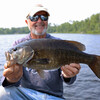
Smallmouth Bass in Sunset Country
Top 5 Musky Destinations in Ontario

Multi-Species Magic
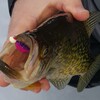
How to: Target Black Crappies (Part 1)
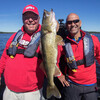
Year Round Fishing in Ontario

Ontario’s Top 5 Ice-Out Species

Fly-in Ontario Lodges
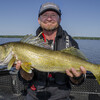
Walleye on Lake Temiskaming

Top 5 Baits for Smallmouth and Largemouth Bass
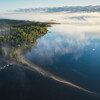
Fly-in Fishing
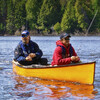
5 Canoe & Kayak Fishing Destinations

Spring Fishing Tips for any Angler

Structure or Cover?
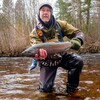
Float Fishing
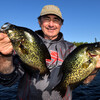
Hello Summertime Crappies
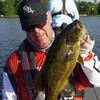
Lake of Bays fishing
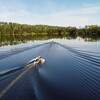
Leuenberger Air Service Is Your Ticket to Ontario's Best Fishing

A Remote Fishing Adventure with White River Air
Ontario's Trophy - Splake Prize
